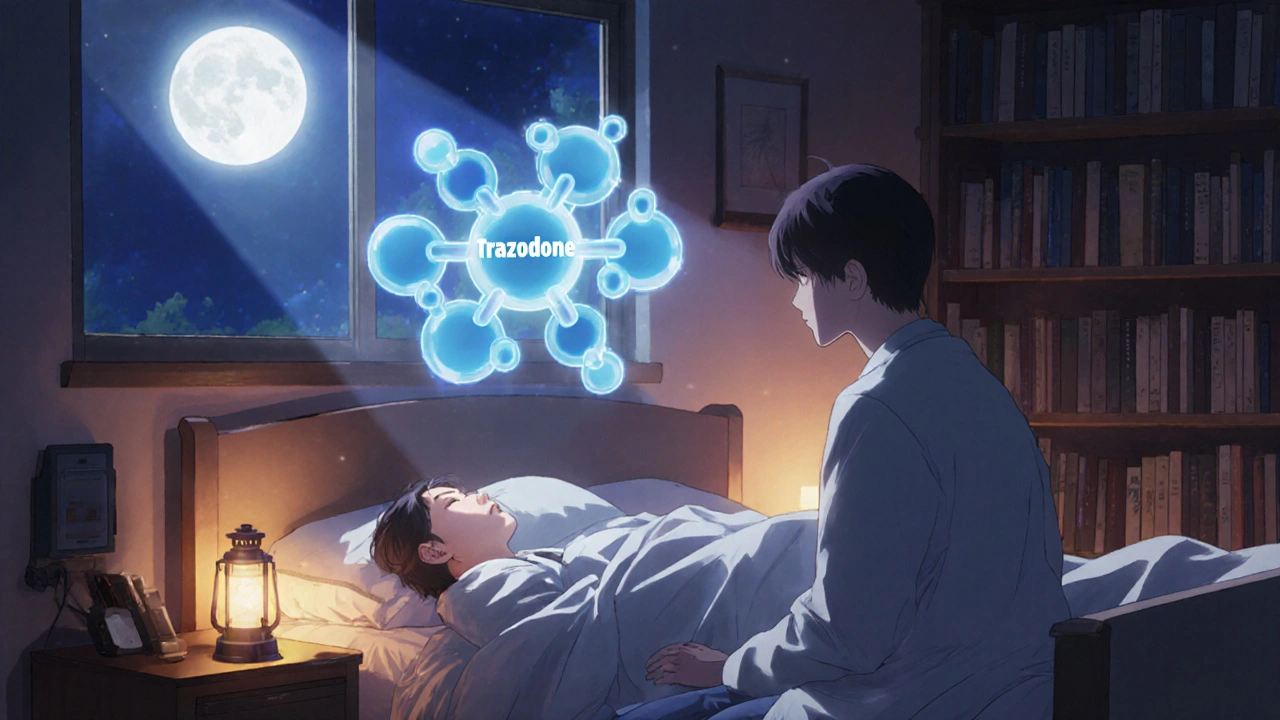Trazodone – Quick Reference and Insights
When you look up Trazodone, a serotonin‑modulating antidepressant commonly prescribed for depression and insomnia. Also known as Desyrel, it works by influencing the brain’s serotonin pathways. It’s primarily used to treat Depression, a mood disorder that affects millions worldwide. At lower doses it’s also effective for Insomnia, a sleep disturbance that many patients struggle with. The drug’s action hinges on Serotonin, a neurotransmitter that regulates mood, sleep, and appetite. By blocking certain serotonin receptors while weakly inhibiting reuptake, Trazodone creates a calming effect without the strong activating feeling of some SSRIs. Typical adult dosing starts at 50 mg at bedtime for sleep, climbing to 150‑300 mg split doses for mood control. Because the medication can cause drowsiness, doctors often advise taking it after the evening meal and avoiding abrupt stops. Common side effects include dry mouth, dizziness, and occasional priapism in men—a rare but serious condition that requires immediate medical attention. Blood pressure may drop, especially when combined with other sedatives, so checking vitals during the titration phase is wise. Overall, the risk‑benefit profile makes Trazodone a versatile option for people who need both mood lift and better sleep.Trazodone remains popular for these dual actions.
Key Points About Trazodone
In practice, clinicians weigh Trazodone against other antidepressants like SSRIs (e.g., sertraline) and SNRIs (e.g., venlafaxine). Unlike classic SSRIs, Trazodone has a built‑in sedating quality, so it can replace a separate nighttime sleep aid. This saves patients from juggling multiple pills and reduces the chance of drug‑drug interactions. Compared with older tricyclic antidepressants, Trazodone carries a lower risk of cardiac toxicity, making it safer for older adults. However, it does interact with other serotonergic drugs, such as monoamine oxidase inhibitors or certain migraine meds, raising the specter of serotonin syndrome. Monitoring for signs—confusion, rapid heart rate, high fever—is essential when combining therapies. When prescribing, doctors often start with a low bedtime dose (25‑50 mg) to gauge tolerance, then increase gradually if mood symptoms persist. The drug’s half‑life is about 6‑8 hours, so steady‑state levels are reached after a few days, allowing patients to notice mood improvements within one to two weeks. For insomnia, the sedative effect can appear almost immediately, helping patients fall asleep within 30‑60 minutes. Lifestyle tweaks—limiting caffeine, establishing a regular sleep schedule, and using relaxation techniques—can boost the medication’s effectiveness. For patients with liver disease, dose reductions are recommended because Trazodone is metabolized hepatically. Likewise, renal impairment does not drastically alter clearance, but clinicians still keep an eye on overall fluid balance. Patient education is a crucial part of therapy. Explain that the initial “hangover” feeling the next morning often fades after the first week. Encourage reporting any painful erections, as early intervention prevents complications. Discuss the importance of not mixing alcohol or other central nervous system depressants, which can amplify drowsiness. Finally, remind users that abrupt discontinuation may trigger rebound insomnia or anxiety, so tapering off under medical guidance is the safest route. Below you’ll find a curated set of articles that dive deeper into Trazodone’s dosing strategies, side‑effect management, and how it stacks up against other sleep‑aid and antidepressant options. Explore the collection for practical tips, comparative tables, and patient‑focused advice that can help you make an informed decision.
Trazodone vs Alternative Sleep and Antidepressant Medications - 2025 Comparison Guide
A 2025 guide comparing Trazodone with five common alternatives, covering uses, side effects, dosage, and best‑fit scenarios for depression and insomnia.
